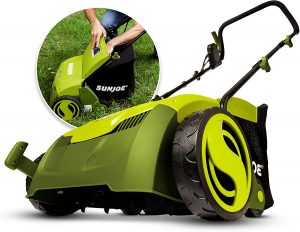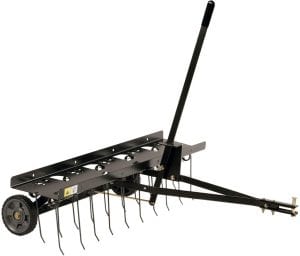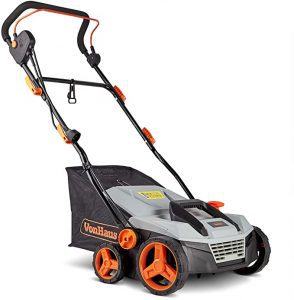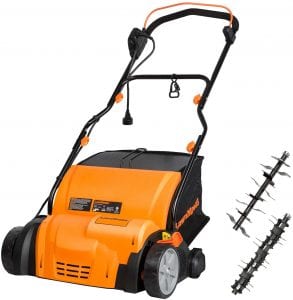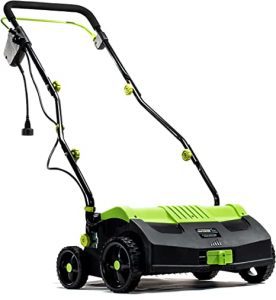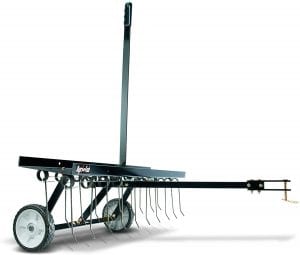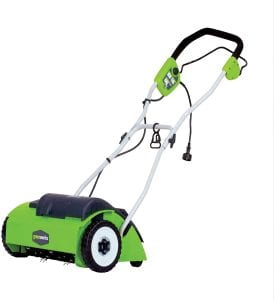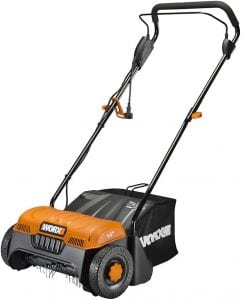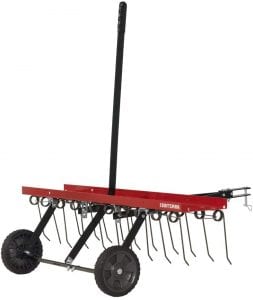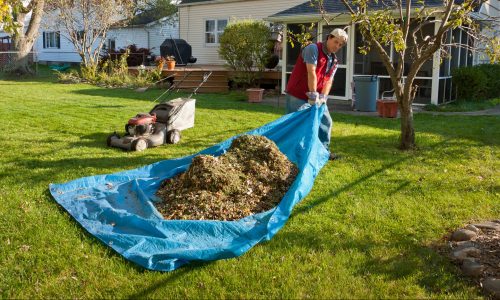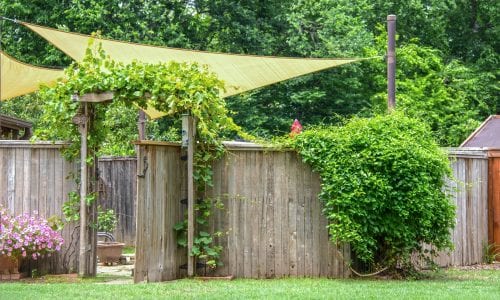The Best Dethatchers
We looked at the top 10 Dethatchers and dug through the reviews from 11 of the most popular review sites including and more. The result is a ranking of the best Dethatchers.
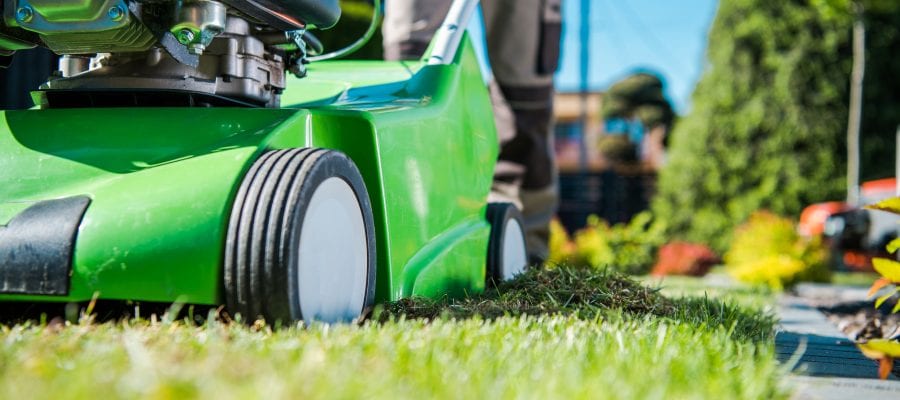
Our Review Process
Don't Waste Your Money is focused on helping you make the best purchasing decision. Our team of experts spends hundreds of hours analyzing, testing, and researching products so you don't have to. Learn more.
Our Picks For The Top Dethatchers
- 1. Yard Butler ID-6C Cushioned Grips Manual Coring Dethatcher
- 2. Sun Joe AJ801E Adjustable Deck Lawn Dethatcher, 13-Inch
- 3. Brinly DT-40BH Removable Thatch Multiple Settings Dethatcher, 40-Inch
- 4. VonHaus Garden Folding Dethatcher, 15-Inch
- 5. LawnMaster GV1314 Automatic Grass Collector Dethatcher, 15-Inch
- 6. Earthwise DT71613 Lawn Cultivator Dethatcher, 16-Inch
- 7. Agri-Fab Rust-Proof Uprooting Dethatcher, 40-Inch
- 8. Greenworks Stainless Steel 3-Position Dethatcher, 14-Inch
- 9. WORX WG850 Easy Store Lock-Off Switch Dethatcher, 14-Inch
- 10. Craftsman Lawn Tractor Dethatcher, 40-Inch
This dethatcher stands 37-inches tall, so you don't have to bend over to use it. The handy gardening device is constructed using a durable steel and designed with an added footbar for increased leverage. It also does an excellent job of aerating your lawn for maximum health.
Economical PickIf you don't mind a little manual labor, this budget-friendly dethatcher will save you big.
Built with a 12-Amp motor, this dethatcher rakes a 12.6-inch-wide path to cover more ground in each swipe. A collection bag ensures clippings are easily discarded to reduce mess. It has spring steel tines to grab the most thatch possible.
Handy and EffectiveThis robust electric dethatcher is designed to revitalize small to midsize lawns.
This dethatcher can work as a straight dethatcher or operate more aggressively to get down into the soil. There's also a transport mode to let you move it easily cross driveways and walkways. An all-steel design makes it easy to tackle tough jobs, and a heavy-duty tray can hold up to 70 pounds of organic debris.
Useful ToolThis manual dethatcher has a mode that digs into soil, making it perfect for reseeding projects.
With this dethatcher, you get two tools for the price of one. In addition to removing thatch from your lawn, this unit also perforates the soil for better aeration. It features five different height settings and easily folds up to make storage during the winter a breeze.
Multifunctional ToolThis dethatcher is best for lawns that are considered small or mid-size.
Buying Guide
A healthy green lawn adds significantly to the curb appeal of your home. But lawn maintenance can be a lot of work. Luckily, there are plenty of tools that can help.
One of those tools is a dethatcher. A dethatcher helps remove the loose layer of grass stems, roots, and leaves that forms just above the soil but underneath vegetation. A thin layer of thatch can be a good thing because it acts like a mulch, moderating temperature and moisture levels. But, once it reaches a one-inch thickness, it can start keeping air, water and nutrients from getting to the soil. You also may have issues with insects and lawn diseases.
Preventing thatch buildup is the first step. Thatch forms when new organic matter accumulates faster than the old organic matter decomposes. So as tempting as it can be to water and fertilize your grass, too much of this can create thatch. Try to avoid overwatering your grass. If you use a fertilizer, make sure it isn’t too high in nitrogen.
But once you have thatch, it’s time to get rid of it. You can use a rake to pull it from the soil, but if you have a lot of ground to cover, or thatch is a regular issue, you can buy lawn equipment that will do that job more capably and with less manual labor.
Dethatchers, or scarifiers, can be manual or motor-powered. You’ll want to look at how powerful the engine is as well as how much lawn it can turn up in one swipe. You might also wish to find one that holds organic debris in a bag or tray.
Why we recommend these dethatchers?
Products Considered
Products Analyzed
Expert Reviews Included
User Opinions Analyzed
Our experts reviewed the top 10 Dethatchers and also dug through the reviews from 11 of the most popular review sites including and more. The result is a ranking of the best of the best Dethatchers.
DWYM is your trusted roduct review source. Our team reviews thousands of product reviews from the trusted top experts and combines them into one easy-to-understand score. Learn more.
What to Look For
- To determine if your lawn is suffering from a thatch problem, stick your finger through it. If you can’t easily find your way to the soil, chances are, water and nutrients can’t, either.
- Some grasses are worse about thatch buildup than others. Kentucky bluegrass and bermudagrass are among the worst.
- Before you begin dethatching, it’s best to mow your grass to about half its normal height. This will help you get to the thatch more easily. You should also mark buried utility lines, sprinkler heads and other obstacles before you get started.
- If you have cool-season grass like Kentucky bluegrass, you can either dethatch in the early spring or early fall. With warm-season grass like bermudagrass, it’s best to dethatch in late spring.
- Dethatching will leave a lawn full of thatch. You can remove the mess with a leaf rake, but some dethatchers come with leaf bags to make cleanup easy.
- After dethatching, you may see a few bald spots. You can purchase products designed to reseed empty patches in your yard.
- If you’re dethatching before reseeding your yard, you can find dethatchers that are ideal for that. They dig a little deeper into the soil, aerating while they work.
More to Explore
Grass looks nice, but having a nicely-tended lawn also serves a function. Keeping a well-maintained green makes you a good neighbor, beautifying your community in accordance with local customs and creating open spaces for children to play. Also, grass lawns may reduce traffic noise and cool down an area slightly. When it rains, they can also help keep runoff at bay, absorbing some of that water to help prevent flooding.
But caring for grass can be tricky. Different types of grass require different types of care, so it’s important to make sure you’re following the directions specific to your type. It’s also important to avoid doing too much thatching unless it has become a serious problem. Overthatching removes organic matter and can harm your lawn’s health.




